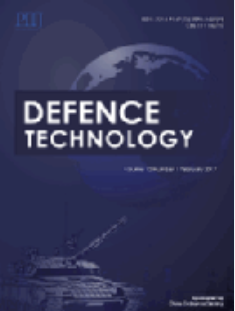冲击和爆炸荷载作用下混凝土的水弹塑性损伤和帽弹塑性损伤材料模型的综合比较
IF 5.9
Q1 ENGINEERING, MULTIDISCIPLINARY
引用次数: 0
摘要
混凝土材料模型在弹丸冲击和装药爆炸作用下混凝土动力响应的数值预测中起着重要作用。目前的混凝土材料模型可分为具有独立状态方程的水—弹塑性损伤模型和具有连续帽面的帽—弹塑性损伤模型。这两种模型之间的本质差异对于研究人员选择合适的具体材料模型来解决所关注的问题至关重要,而现有的研究结论相互矛盾。为了解决这一问题,本文首先概述了两种模型的本构理论。然后,对两种模型的本构理论进行了全面比较,明确了两种模型的主要异同点,并通过单单元数值算例进行了论证。最后,对弹侵彻和装药爆炸在具体目标上的数值预测结果进行了比较,进一步验证了本构比较的结论。研究发现,在材料模型所需参数标定良好的情况下,两种模型均可用于模拟抛物冲击和爆炸荷载作用下混凝土的动力响应,但两者之间可能存在一定的差异。本文章由计算机程序翻译,如有差异,请以英文原文为准。
A comprehensive comparison of hydro-elastoplastic-damage and cap-elastoplastic-damage material models for concrete subjected to impact and blast loadings
Concrete material model plays an important role in numerical predictions of its dynamic responses subjected to projectile impact and charge explosion. Current concrete material models could be distinguished into two kinds, i.e., the hydro-elastoplastic-damage model with independent equation of state and the cap-elastoplastic-damage model with continuous cap surface. The essential differences between the two kind models are vital for researchers to choose an appropriate kind of concrete material model for their concerned problems, while existing studies have contradictory conclusions. To resolve this issue, the constitutive theories of the two kinds of models are firstly overviewed. Then, the constitutive theories between the two kinds of models are comprehensively compared and the main similarities and differences are clarified, which are demonstrated by single element numerical examples. Finally, numerical predictions for projectile penetration and charge explosion experiments on concrete targets are compared to further demonstrate the conclusion made by constitutive comparison. It is found that both the two kind models could be used to simulate the dynamic responses of concrete under projectile impact and blast loadings, if the parameter needed in material models are well calibrated, although some discrepancies between them may exist.
求助全文
通过发布文献求助,成功后即可免费获取论文全文。
去求助
来源期刊

Defence Technology(防务技术)
Mechanical Engineering, Control and Systems Engineering, Industrial and Manufacturing Engineering
CiteScore
8.70
自引率
0.00%
发文量
728
审稿时长
25 days
期刊介绍:
Defence Technology, a peer reviewed journal, is published monthly and aims to become the best international academic exchange platform for the research related to defence technology. It publishes original research papers having direct bearing on defence, with a balanced coverage on analytical, experimental, numerical simulation and applied investigations. It covers various disciplines of science, technology and engineering.
 求助内容:
求助内容: 应助结果提醒方式:
应助结果提醒方式:


